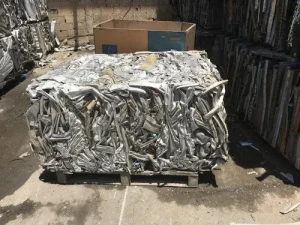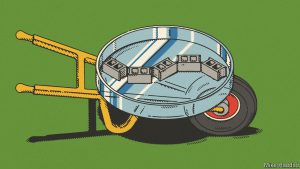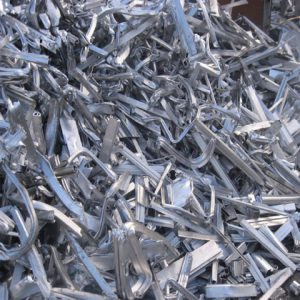
Aluminum is one of the most recycled—and recyclable—materials in use today. A recycled aluminum beverage can, car door or window frame is often recycled directly back into itself. And this process can happen virtually infinitely.
Circular Economy Solution
High value and infinitely recyclable aluminum is a material tailor-made for a more circular and sustainable economy.
- Recycling is a critical part of the modern aluminum business. Making recycled aluminum only takes around 5% of the energy needed to make new aluminum — reducing carbon emissions and saving money for businesses and end consumers.
- As a result, nearly 75% of all aluminum ever produced is still in use today.
- In most industrial markets like automotive and building, recycling rates for aluminum exceed 90%.
- Industry recycling efforts in the U.S. save more than 90 million barrels of oil equivalent each year.
Recycling aluminum is good for the environment—and the economy. The U.S. recycles more aluminum today than ever before. And we’re just getting started.
95%
Recycled aluminum saves 95% of the energy needed to make new aluminum.
$800M+
We could save over $800 million for the U.S economy each year by recycling all of our aluminum beverage cans.
80%
Recycled aluminum makes up 80% of U.S. aluminum production.
Recycling More Aluminum Than Ever
The U.S. collects more than twice the amount of aluminum today for recycling than it did in the 1980s. And while recycling rates in most industrial markets exceed 90%, we can do more — particularly when it comes to aluminum beverage cans.
While aluminum cans are recycled at far higher rates than glass or plastic, these rates have fallen below 50% in recent years. That means more than $800 million worth of aluminum ends up in a landfill — a tremendous loss to the economy and the environment.
A Growing Secondary Production Market
Aluminum production in the U.S. is increasingly a story of scrap recovery and recycling. While primary aluminum production remains a vital part of the American aluminum supply chain, more than 80% of U.S. production today is in making recycled (or secondary) aluminum. This compares to 20% to 30% recycled production in the 1980s. All told, the U.S. produces more recycled aluminum than any single country other than China.
Increasing aluminum recycling translates to less energy used and a lower carbon impact. In the aluminum beverage can market, for example, each percentage increase in the end-of-life recycling rate reduces the carbon intensity of aluminum beverage can production by 1.02 kg CO2 equivalent per 1,000 cans. Increased recovery and recycling of aluminum is essential to continued industrywide decarbonization.
The Aluminum Can Advantage
Aluminum beverage cans are the most sustainable beverage package on virtually every measure. Cans have a higher recycling rate and more recycled content than competing package types. They are lightweight, stackable and strong, allowing brands to package and transport more beverages using less material. And aluminum cans are far more valuable than glass or plastic, helping make municipal recycling programs financially viable and effectively subsidizing the recycling of less valuable materials in the bin.
Most of all, aluminum cans are recycled over and over again in a true “closed loop” recycling process. Glass and plastic are typically “down-cycled” into products like carpet fiber or landfill liner.
Link: https://www.aluminum.org/Recycling





